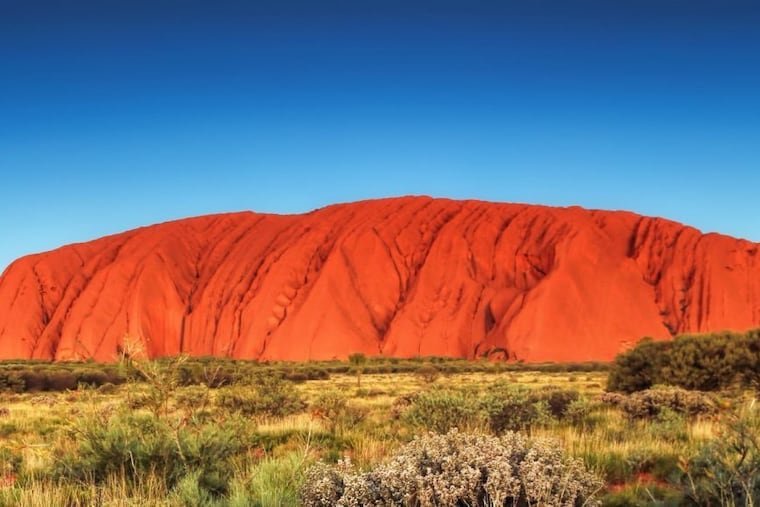ULURU HANDBACK 40 YEARS ON: The Day Australia Finally Returned the Heart of the Country to Its Rightful Owners
- It’s been four decades since the Commonwealth government handed back the title deeds for Uluṟu-Kata Tjuṯa to the Anangu, Pitjantjatjara and Yankunytjatjara (APY) people
- The historic moment marked a monumental shift in the history of land rights in Australia
- But despite the progress, the community of Mutitjulu, at the rock’s base, still lacks adequate housing, basic amenities and services
October 26, 1985, was a day that will be etched in the memories of Australians for generations to come. It was the day the Commonwealth government finally returned the title deeds for Uluṟu-Kata Tjuṯa to the Anangu, Pitjantjatjara and Yankunytjatjara (APY) people, marking a monumental shift in the history of land rights in Australia.
The ceremony, which took place at the base of the rock, was attended by crowds of Indigenous and non-Indigenous observers, who stood in awe as the red, yellow and black flag was stretched tight against the sun. The late Yankunytjatjara elder and activist Kunmanara Lester translated the words of Sir Ninian Stephen as he handed back the country that already belonged to the people standing before him.
But the journey to this moment was far from easy. The APY people had been fighting for their land rights for decades, concerned about mining, pastoralism, tourism and the associated desecration of sacred sites. They pushed hard for their rights, lobbying former prime minister Malcolm Fraser and then-Aboriginal affairs minister Fred Chaney from the late 1970s, calling for amendments to the Land Rights Act to allow them to make a claim.
The NT government resisted their calls, wanting instead for the title to be transferred from the federal government to the territory, with no control of park management and reduced title for traditional owners. But in 1983, the Labor government under Bob Hawke announced it would amend the Aboriginal Land Rights (Northern Territory) Act and return the title for the Uluṟu-Kata Tjuṯa National Park to the APY people.

Today, the park is jointly managed by the traditional owners and Parks Australia, with a majority of Anangu members on the joint board of management. But despite the progress, the community of Mutitjulu, at the rock’s base, still lacks adequate housing, basic amenities and services. The struggle for the APY people is far from over, but the handback of Uluṟu-Kata Tjuṯa remains a beacon of hope for a brighter future.
In a heartbreaking development, the community of Mutitjulu is still waiting for the basic necessities of life, despite the millions of dollars generated by tourism in the area. “It’s a shame that 40 years on, we still don’t have the basic amenities and services that other Australians take for granted,” said a local resident.
But the APY people remain optimistic, and the handback of Uluṟu-Kata Tjuṯa remains a powerful symbol of their struggle for justice and recognition. As one elder said, “We will continue to fight for our rights, and we will never give up. The handback of Uluṟu-Kata Tjuṯa is just the beginning.”

